Agronomy: Pay Attention to the Details
To make sure your crop is getting enough nutrients, use tissue testing to confirm. When we think about providing nutrients to our crops, most times we think about the macronutrients we apply and what we remove from fields in the grain. When we are managing our soybeans throughout the season, however, we need to understand what the soybean plant actually needs—not only to produce the seed that we will harvest, but also to complete its lifecycle. For example, 100 bushels of soybeans will remove in the seed 380# N, 84# P2O5 and 130# K20. The crop however will need [...]
Agronomy: The Top 10 Quotes an Agronomist Does Not Want to Hear a Farmer Say About Soybeans
10. “Soybeans are just a crop that I use to rotate and plant after my corn.” The average soybean yield in Illinois is 55 bu/A, and yet we know that our soybean genetics have the potential to reach yields of 100 bu/A. Focus on “Six Secrets to Soybean Success” such as weather, fertility, genetics, foliar protection, seed treatment and row arrangement as introduced by University of Illinois professor, Dr. Fred Below. You will find some ideas on how to improve yield. https://www.ilsoyadvisor.com/agronomy/2016/january/webinar-six-secrets-of-soybean-success/ 9. “I scout from the combine.” For top producers, their key to success is to have “boots on [...]
Plant and Soil Health: Webinar: Soil Sampling to Plan for High Yield Soybeans
Soil sampling is an integral part of a strong soybean management program, according to Andy Wycislo, Midwest region agronomist for Waypoint Analytical. Illinois is made up of a variety of different soils, and each type of soil has different characteristics that influence the success of the crops that grow in it. Soil sampling can indicate what the soil needs and doesn’t need, and growers can learn how to get the most out of each growing season by learning more about the soils on their farm. Key Takeaways: Consistency is key for taking soil samples. Make sure all samples are at [...]
Plant and Soil Health: Phosphorus Management Webinar Series
In March 2016, ISA organized a phosphorus management webinar series. This three-part series focused on reducing phosphorus loss from growers’ fields, implementing the 4Rs, and specific fertilizer management practices. Click on the links below to view the webinars. One CEU in Nutrient Management is available for viewing each webinar. Don't be a black-eyed P: How to reduce P loss from fields Sustainable Thinking 4R Phosphorus Fertilizer Management Practices to Reduce the Loss of Dissolved and Sediment-Bound P
Agronomy: Podcast: Buffer Strips
Steve Baker, president of Springfield Plastics Inc., reviews saturated buffer strips in this podcast. He explains the difference between a traditional and a saturated buffer strip. He notes that saturated systems have been researched in a wide geography and most vegetation types can use this nitrogen. Baker encourages growers to do research on their own farm and experiment with this practice to see the costs they could save. Launch audio>>>
Agronomy: Podcast: Cover Crops
Kris Reynolds, CCA and resource conservationist for the Montgomery County Soil and Water Conservation District, reviews the fundamentals of cover crops in this podcast. He explains what farmers should consider when selecting a cover crop, and emphasizes the importance of management when incorporating cover crops into their operation. He notes there will be a learning curve when trying something new, but encourages growers to continue experimenting with cover crops to see the full range of benefits to soil health. Launch audio>>>
Agronomy: Wrapping up for the ’16 season
As we start to wrap up the 2016 growing season it’s time sit back and reflect on what we learned this spring and summer. Most of us only get to grow one crop per year and the lessons we can gain, if we pay attention, will help with the coming year’s crops. Try to think about what worked, what didn’t and what you would do differently. Is it clear in your mind, did you write things down? If you can recall every instance in every field you are much better than I am. That is why “on-farm research” is [...]
Agronomy: Podcast: Organic Matter in Soil
Ivan Dozier, state conservationist for the Illinois Natural Resources Conservation Service, delves into the basics of organic matter, including short-term versus long-term organic buildup. He explains the benefits of the mulch effect, which include preventing erosion, suppressing weeds, improving tilth and helping soil maintain moisture. Growers can see the benefits of the mulch effect in as little as a year, which is why many farmers are adopting conservation practices on their acres. Launch audio>>>
Disease Management: Brown Spot in Soybeans
Probably the most common disease in soybeans is brown spot, also known as Septoria brown spot. It is a fungal disease caused by the pathogen Septoria glycines. It is very common across the Corn Belt and appears in about all soybean fields to some degree. The disease is usually present in the lower canopy, but can move upwards if weather is warm and moist. To learn more click here. This pathogen overwinters and survives in soybean residue and can survive over a 2-year corn-soybean rotation. When it rains, the spores splash up into the lower canopy and infect lower leaves. [...]
Agronomy: Is it Possible to Estimate Soybean Yields?
Many people do yield checks of corn and feel they can get relatively close (+/- 10 percent) to the actual yield. On the other hand, yield checks of soybeans seem to be much more difficult and getting within +/- 25 percent is doing fairly well. In my experience, most people over estimate the yield of soybeans. Generally, this is because they overestimate one or more of the yield factors—plant population, pod count, seed count or seed size. When you overestimate more than one component it can really magnify (increase) the theoretical yield. The math required to estimate soybean yields is [...]

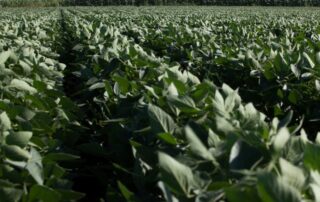
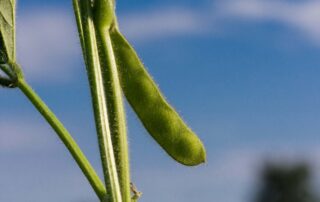
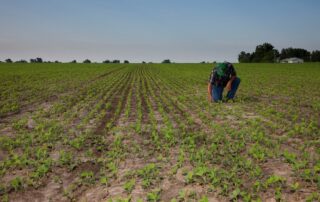
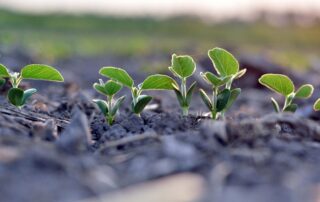
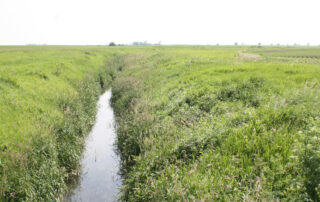
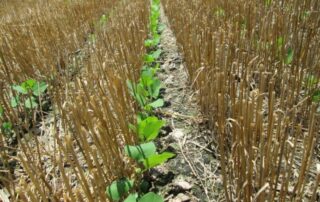
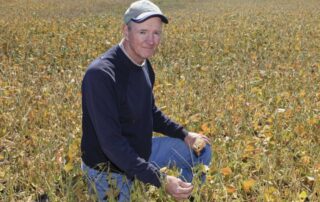
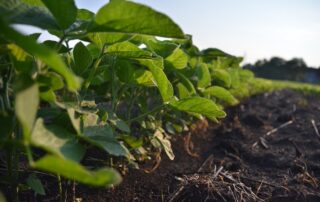
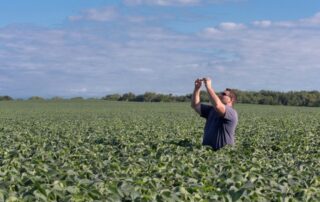
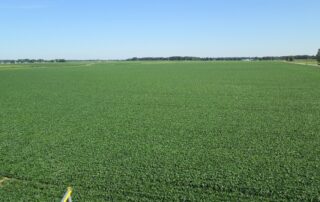



 and then
and then